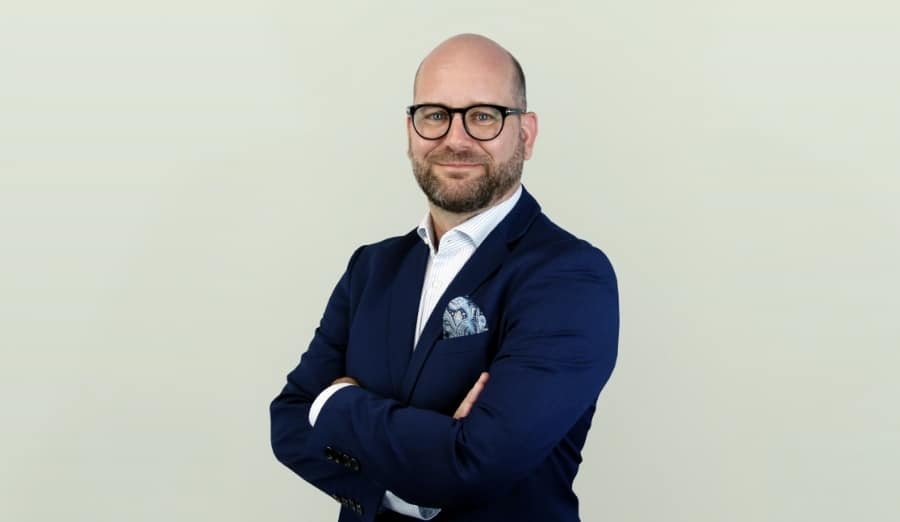Rail transportation in Mexico
An Interview with Gorden A. Rumpff, Head of Mexico at DB Engineering&Consulting
Few other countries plan such large investments in the expansion of rail transport as Mexico. While in Germany the focus is on modernization and increasing the efficiency of existing routes, Mexico plans the largest expansion in Latin America with around 3,500 km of new routes. The nearshoring trend of recent years has significantly increased the need for improved capacity and efficiency in freight transport, to facilitate trade and ensure logistics chains. In densely populated areas and major cities, it is also important to relieve the transport infrastructure and provide environmentally friendly transport options. Less developed regions should also be better connected to promote economic development there.
Today we discuss with Gorden A. Rumpff, Head of Mexico at DB Engineering & Consulting, how such projects are running in Mexico and what challenges there are.

Gorden A. Rumpff, Leiter Mexiko von DB Engineering&Consulting
Dear Gorden, what exactly does Deutsche Bahn do in Mexico?
As a subsidiary of Deutsche Bahn, DB Engineering & Consulting is internationally active – also in Mexico. While we are mainly active for our parent company in Germany, we advise and support public and private clients worldwide in the planning, construction, and operation of modern transport infrastructures. Our experience dates back to the 1960s – since then we have been active in over 100 countries.
In Mexico, rail transport is increasingly the focus of political and social attention, which opens up exciting prospects for us as an international engineering company. Our range of services covers all project phases: from feasibility studies and infrastructure planning to environmental and approval procedures, equipment design, project management, construction supervision, and commissioning support. We always take local conditions and requirements into account – for example, regarding sustainability, technological standards, or future mobility needs. Our goal is to make a sustainable contribution to the development of efficient, safe, and environmentally friendly mobility in Mexico together with our local partners. This also benefits rail customers in Germany.
What makes the projects in Mexico particularly exciting?
On the one hand, it is of course a great confirmation that our European quality approach, our technology, and process know-how are so appreciated here. Then, assignments abroad are also a great learning opportunity for us. For example, in projects that are operated completely automatically, i.e., without a driver, a technology that has not yet been used often in Germany.
In Mexico, the government is elected for six years, after which it cannot be re-elected. Therefore, the declared goal is to realize rail projects within these six years! In Germany, it takes us up to 20 years from planning to commissioning on average. Here we learn how dynamically projects can be implemented. A peculiarity that may seem unusual to us at first glance is that the military plays an important role in the implementation of infrastructure projects here. The first example of this was the AIFA (Aeropuerto Internacional Felipe Angeles) airport north of Mexico City, which was opened in March 2022 after only three years of construction. The military provides security and protection for the construction sites and critical infrastructures. It provides logistical support with vehicles, equipment, and personnel for the transport of materials and workers. And another important aspect is that it coordinates with civilian authorities. This expertise helps ensure that such large infrastructure projects are completed efficiently, safely, and on time!
Which areas do you see where German companies can participate with their expertise?
There is a lot! Everything related to rail and train has potential. From elements of the track such as rails, sleepers, fastenings to telecommunication technology, energy supply, control and safety technology, signal control, digitalization solutions, to the manufacture of trains and maintenance technology. But training is also a big topic. The projects are planned, built, operated – and for that, people are needed who know how it works. As German companies, we can network much better and confidently throw our hat into the ring.
Before I ask the question of what exactly you mean by “better networking”, I must talk about the new US president. How do you assess the “Trump effect” on Mexico?
For our business field, we are closely monitoring the situation, especially regarding public infrastructure investments. However, we currently do not see any concrete impact on the financing or implementation of infrastructure projects in Mexico. Therefore, our strategic orientation remains unchanged: We focus on long-term cooperation and sustainable mobility solutions that contribute to economic stability and networking both regionally and internationally.
Let’s come back and look at how German companies can network better. What do you suggest?
A great platform to discuss the challenges and opportunities in rail transport was the first rail symposium last year, which we initiated and organized. Our goal was to bring experts and decision-makers together in one place and exchange know-how and best practices. We focused on safety and reliability in the development of rail transport and looked at how we can best integrate innovative and digital solutions.
From the Mexican side, we had many representatives from the government and local railway operators on the podium. From the German side, Siemens Mobility, TÜV Rheinland, and of course us, Deutsche Bahn, were represented. The symposium simply showed how important international cooperation is to realize sustainable infrastructure projects. And how important personal exchange is, especially here in Mexico!
The symposium took place at the German Centre in Mexico. Why did you choose this location?
Because the German Centre brings together what belongs together! It is simply the meeting point and networking place for the German business community, as CAMEXA also has its office here and the German Embassy is present. These three partners also supported us in our symposium.
And they will do it again. There will be another symposium in June, stay tuned!
And a personal note about the German Centre: You also find a piece of home here. When you live abroad for a long time, you realize how food and taste are ingrained in your DNA. And here you can also find pretzels, stollen, or bratwurst. It is the small details and interpersonal relationships that the German Centre values and that always bring a smile to your face. The joint regulars’ table of the German Centre and CAMEXA is also recommended.
Last question: You have been living in Mexico City since 2019. What do you do after a long working day?
Yes, exactly, I live in the middle of the city in a very Mexican neighborhood and I feel very comfortable. After work, I like to go with friends to the Roma Norte neighborhood. It is very international there and fascinates me with its many parks and wonderfully designed bars, restaurants, and cafes. The perfect place to enjoy an after-work beer in good company.
Thank you, Gorden!
SIMILAR ARTICLES
More news and events
China Medtech
Join our seminar series and learn more about the opportunities for innovative German solutions in China's fast-growing medtech market.
Hybrid seminar: Staying ahead of regulatory changes
Join us at German Centre in Beijing to gain insights into managing regulatory risks, self-assessments, and real-life case studies.



